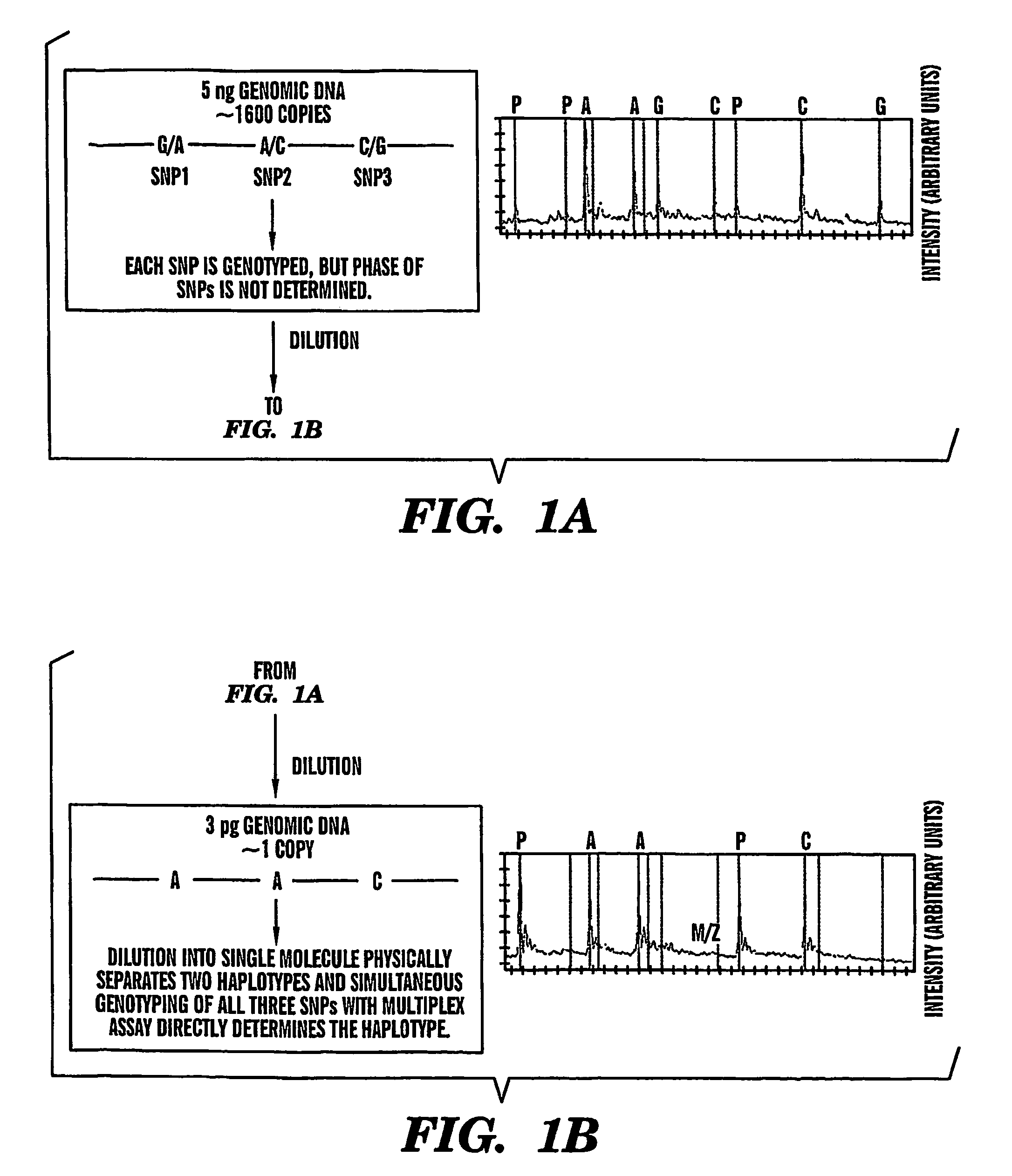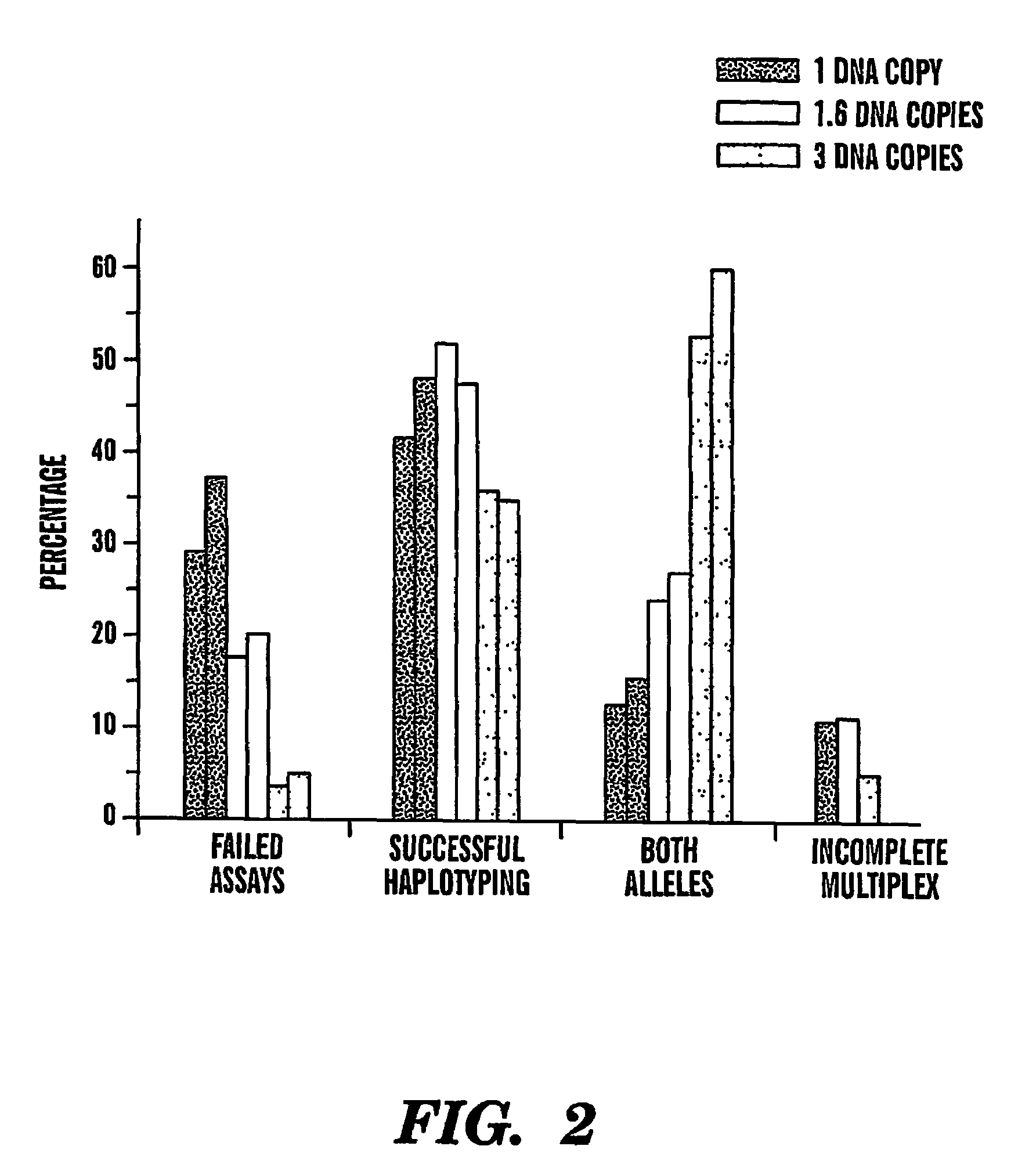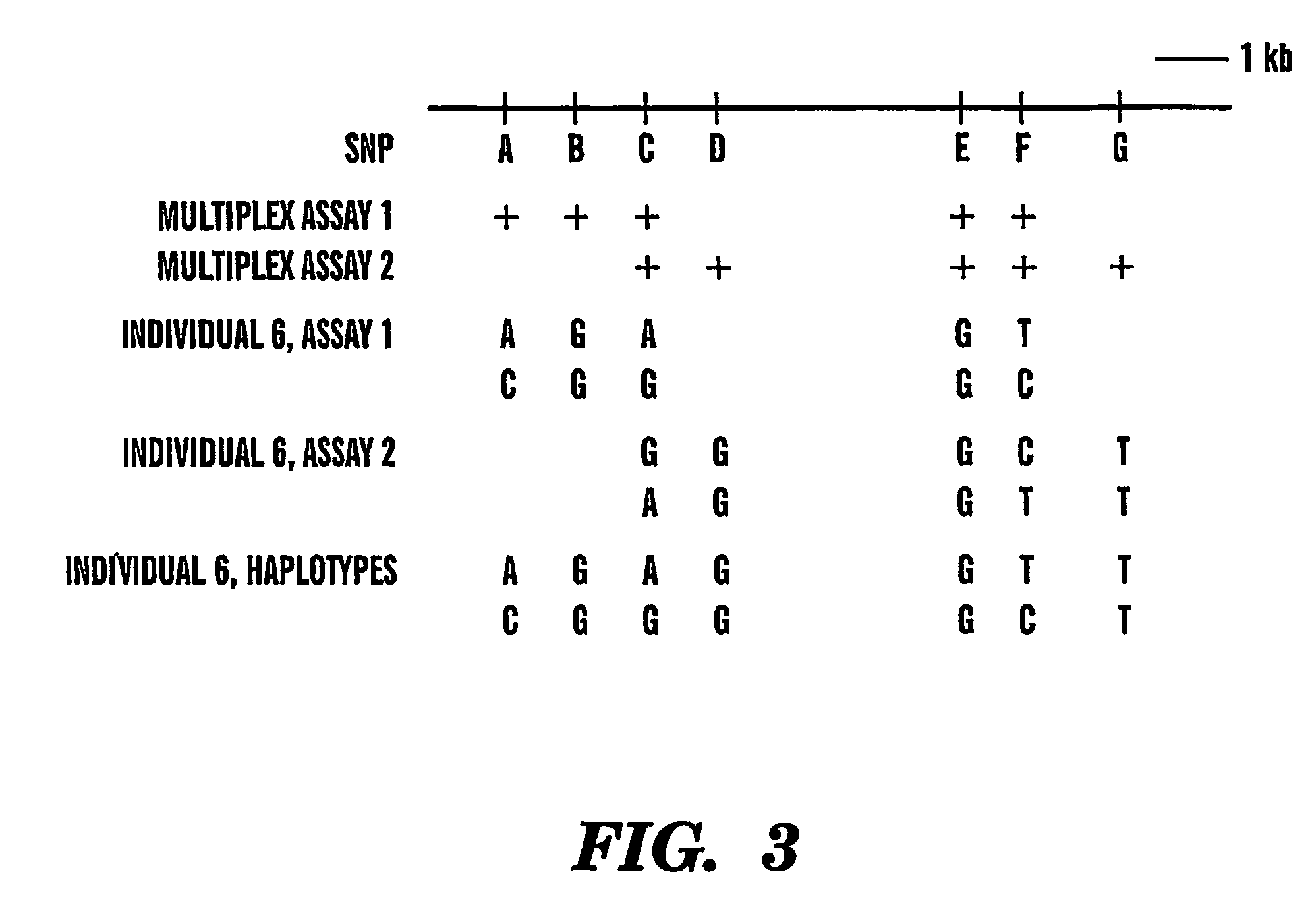Haplotype analysis
a haplotype and analysis technology, applied in the field of haplotype analysis, can solve the problems of lack of information, difficult to determine a haplotype, and current genotyping technology is only able, and achieve the effect of reliable determination of haplotypes and high throughput haplotype analysis
- Summary
- Abstract
- Description
- Claims
- Application Information
AI Technical Summary
Benefits of technology
Problems solved by technology
Method used
Image
Examples
example
[0072]The effects of genomic DNA concentration on haplotyping efficiency were determined as follows. We used 3 picograms (pg), 5 pg and 9 pg (equivalent of 1, 1.6 and 3 genomic template copies) of genomic DNA for PCR amplification and genotyping of 3 SNPs in the CETP region from 12 individuals. Each 3-plex assay was repeated 12-18 times to evaluate the PCR and haplotyping efficiency. A typical assay result is summarized in Table 1. The copy number of the genomic DNA region of interest for very dilute DNA solutions is estimated by the Poisson distribution13. Haplotyping results were categorized into 4 groups (Table 1).
[0073]Failed assays can result from either failed PCR amplification from single copy DNAs or simply no template present due to stochastic fluctuation of very dilute DNA solutions.
[0074]Partially failed genotyping calls (or incomplete multiplexes) are those that have only 1 or 2 SNPs successfully genotyped. This is most likely due to unsuccessful PCR for 1 or 2 of the SN...
PUM
 Login to View More
Login to View More Abstract
Description
Claims
Application Information
 Login to View More
Login to View More - R&D
- Intellectual Property
- Life Sciences
- Materials
- Tech Scout
- Unparalleled Data Quality
- Higher Quality Content
- 60% Fewer Hallucinations
Browse by: Latest US Patents, China's latest patents, Technical Efficacy Thesaurus, Application Domain, Technology Topic, Popular Technical Reports.
© 2025 PatSnap. All rights reserved.Legal|Privacy policy|Modern Slavery Act Transparency Statement|Sitemap|About US| Contact US: help@patsnap.com



